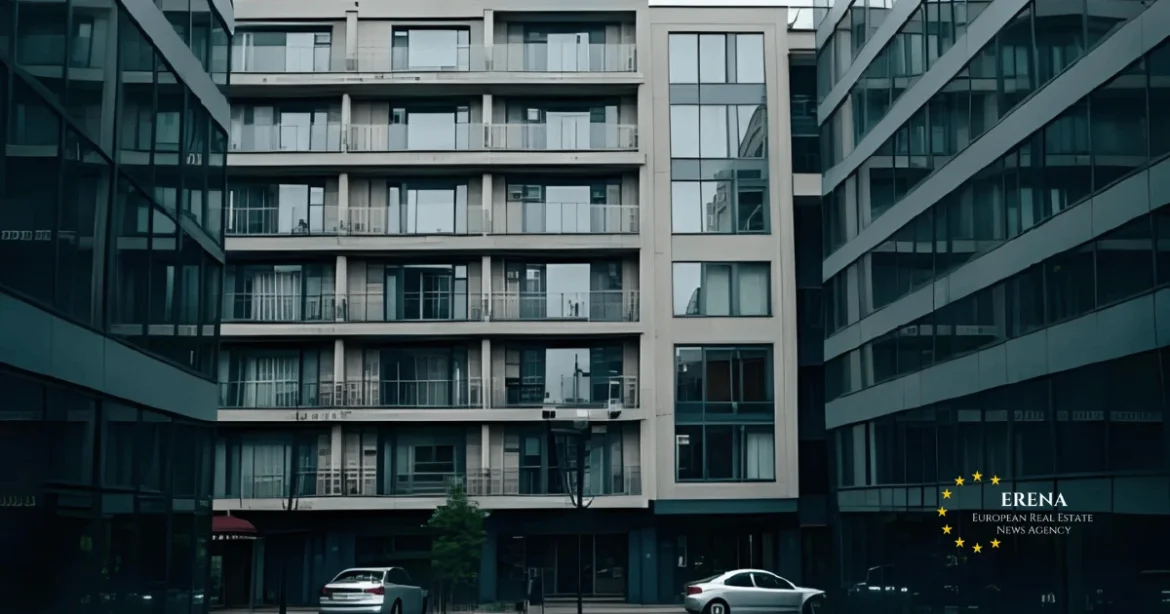Institutional investors are cementing their presence in Europe’s housing market just as affordability pressures intensify. According to JLL, the “living” sector — covering multifamily, single-family rentals, student housing and senior living — accounted for 26% of all real estate investment in 2024, overtaking offices as the largest segment. Demand remains robust in 2025 as portfolio deals return and investors increasingly prioritise stable cash flows.
Capital Flows Strengthen in 2025
Momentum carried into 2025. JLL reports that in Q2 2025, capital invested in living assets reached €13.5 billion, up 35% from Q1 and 2% year-on-year. This pushed first-half volumes to €23.5 billion, a 7% rise compared with H1 2024. A striking 72% of this capital targeted standing assets, reflecting the preference for immediate income streams over development risk.
Demographic growth underpins this resilience. JLL estimates that the 15 largest European cities will add 1.14 million residents by 2030, yet housing completions remain far below demand due to high construction costs, labour shortages and financing constraints. This imbalance keeps occupancy levels elevated and rents rising — features that attract long-term capital such as pension funds and insurers.
Prices and Rents on the Rise
Eurostat confirms the widening affordability gap. In Q1 2025, house prices in the EU rose 5.7% year-on-year, while rents increased 3.2%. Compared with Q4 2024, prices advanced 1.4% and rents 0.9%. Since 2010, cumulative growth stands at +57.9% for house prices and +27.8% for rents.
Mortgage financing remains costly despite easing from 2023 peaks. The European Central Bank reported that in July 2025, the average rate on new housing loans stood at 3.28%, with fixed contracts depending on maturity ranging between 3.1–3.5%. The ECB notes that housing affordability has “only partially recovered” from the crisis years and remains below pre-2021 levels.
Local Market Snapshots
Barcelona. Rental growth is steep. Idealista data show average asking rents at €23.6 per m² per month in March 2025, a 13.5% year-on-year increase. Sale prices vary across districts, with prime areas commanding a significant premium over mainstream housing.
Milan. Mainstream sale prices average €5,400–5,800 per m², according to Italian property portals. Prime districts such as Quadrilatero and Brera regularly exceed €12,000 per m², underlining the strong international demand for trophy assets in the city.
Regulation Shapes Returns
Policymakers across Europe are tightening rules to balance affordability with supply, though approaches differ.
- Germany. The Mietpreisbremse caps new rents in stressed areas at no more than 10% above the local reference index. Enforcement varies but the cap has slowed increases in markets such as Berlin and Munich.
- France. From January 2025, landlords cannot rent homes with a G-rated energy certificate (DPE). A rent freeze also applies to low-efficiency properties, pushing owners to renovate but reducing short-term supply.
- Spain. The 2023 Housing Law allows rent caps in “stressed” areas. Catalonia implemented the framework in 2024, initially covering 140 municipalities and later expanding to over 270. Application remains uneven, creating uncertainty for investors.
These fragmented policies add complexity for cross-border portfolios, but they have not stopped capital from targeting Europe’s residential sectors.
Why Institutions Stay Bullish
Several fundamentals explain sustained appetite:
- Chronic undersupply. Demand growth outpaces delivery, leaving pipelines thin.
- Stable income. Rents track inflation and occupancy often exceeds 95% in major cities, creating reliable returns.
- Liquidity return. With monetary policy stabilising, large portfolio transactions are back, providing scale and efficiency.
- ESG alignment. New developments offer opportunities to deploy green capital into energy-efficient housing.
For investors, living assets provide diversification away from volatile office and retail segments and match long-term liability structures.
Outlook: Households Under Pressure
The ECB warns that Europe’s brief housing downturn has given way to renewed price pressures, intensifying affordability concerns. Unless construction accelerates, rent-to-income ratios in capital cities are expected to climb further into 2026. Rising costs risk fuelling political debate, with governments considering broader rent caps, subsidies and housing rights frameworks.
For institutions, however, fundamentals remain supportive: constrained supply, dependable cash flows and an increasingly mature, liquid asset class. The divide is clear — for investors, Europe’s housing market represents resilient opportunity; for households, it raises the prospect of growing inequality unless policy and private capital converge to deliver more, and greener, homes.
“Monetary policy can make housing significantly more or less affordable, mainly through its impact on mortgage rates.” — European Central Bank

